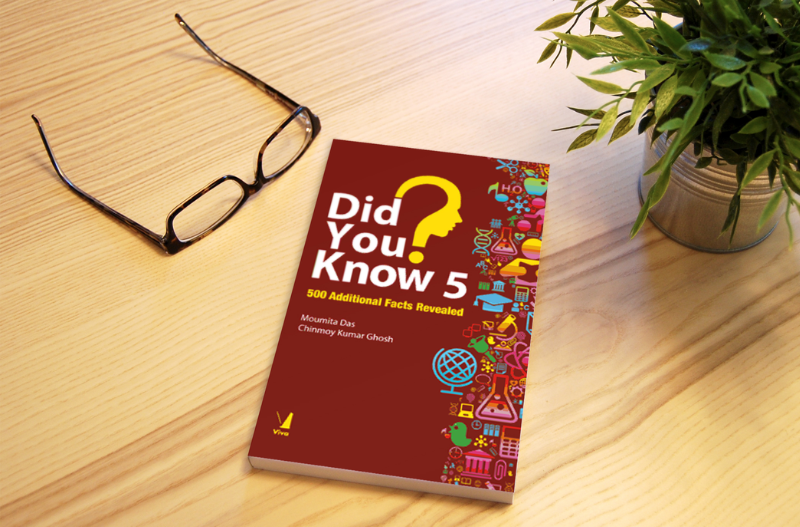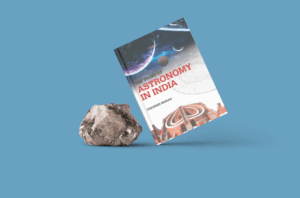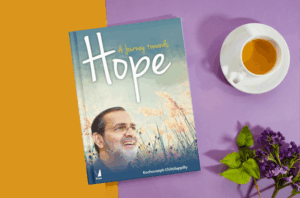The one-billionth Indian child was born on 11 May 2000.
A 700-year-old banyan tree was given a drip to rejuvenate it.
You can sell refrigerators to Eskimos.
Volkswagen sold more sausages than cars in 2015.
Amazon.com was previously known as Cadabra.com
Russia built a computer that ran on water.
Did You Know? 5, yet another book in the series of Did You Know, is here with lots of amazing and fascinating facts that generally are unrecognized. This book will ignite the curiosity in the minds of readers, investigate the phenomena and inspire them to be creative and innovative.
Here is an excerpt from the book
As a child Albert Einstein started talking late, a matter that had kept his parents worried.
It has been documented that one night when the family was dining, the child Einstein observed ‘The soup is too hot’. This led to jubilation that the quiet boy had spoken at last. The relieved parents asked the child why he had not spoken before. The reply from Albert was ‘because up to now everything was in order’.
Nikola Tesla would constantly look for problems on the dining table too.
Nikola Tesla was known for his pioneering work in electricity, particularly in the field of alternating current. He was also a brilliant mathematician. In a restaurant, he would first calculate the quantity of soup in a bowl and then consume it.
Its name is taken from a dish that was popular in the Victorian period, mock turtle soup.
Jöns Jacob Berzelius was thrown out of school, but later became the author of the modern chemical language.
He got orphaned during his early childhood. He supported his studies by tutoring lower class students. He is especially noted for his determination of atomic weights, the development of modern chemical symbols, and his electrochemical theory and so on.
The subject of Andrew Robinson’s biography The Inner Eye is Satyajit Ray.
Again Satyajit Ray made a documentary The Inner Eye on the life and works of the visually impaired artist, Sri Benode Behari Mukhopadhyay.
Alan Bean, the fourth man to walk on the moon, returned his space suit to NASA to become an artist.
Bean once recollected that even on the moon, he could not suppress his artistic instincts. He, while looking back at the earth started thinking ‘My, that’s beautiful’, then he said to himself, ‘stop fooling around and go collect rocks’.
Sigmund Freud loved mushrooms.
He was also very fond of children. During family outings, he would direct all children to hunt for mushrooms. By the end of the day, each child will get a prize –first mushroom, last mushroom, biggest one, the smallest one and so on.
The fictional character, ‘The Mock Turtle’ in Lewis Carroll’s Alice in Wonderland defines the four branches of arithmetic as ‘Ambition, Distraction, Uglification and Derision’.
Its name is taken from a dish that was popular in the Victorian period, mock turtle soup.
Jöns Jacob Berzelius was thrown out of school, but later became the author of the modern chemical language.
He got orphaned during his early childhood. He supported his studies by tutoring lower class students. He is especially noted for his determination of atomic weights, the development of modern chemical symbols, and his electrochemical theory and so on.
The subject of Andrew Robinson’s biography The Inner Eye is Satyajit Ray.
Again Satyajit Ray made a documentary The Inner Eye on the life and works of the visually impaired artist, Sri Benode Behari Mukhopadhyay.
Alan Bean, the fourth man to walk on the moon, returned his space suit to NASA to become an artist.
Bean once recollected that even on the moon, he could not suppress his artistic instincts. He, while looking back at the earth started thinking ‘My, that’s beautiful’, then he said to himself, ‘stop fooling around and go collect rocks’.
Want to explore this book and others in the series? Click here to learn more.




